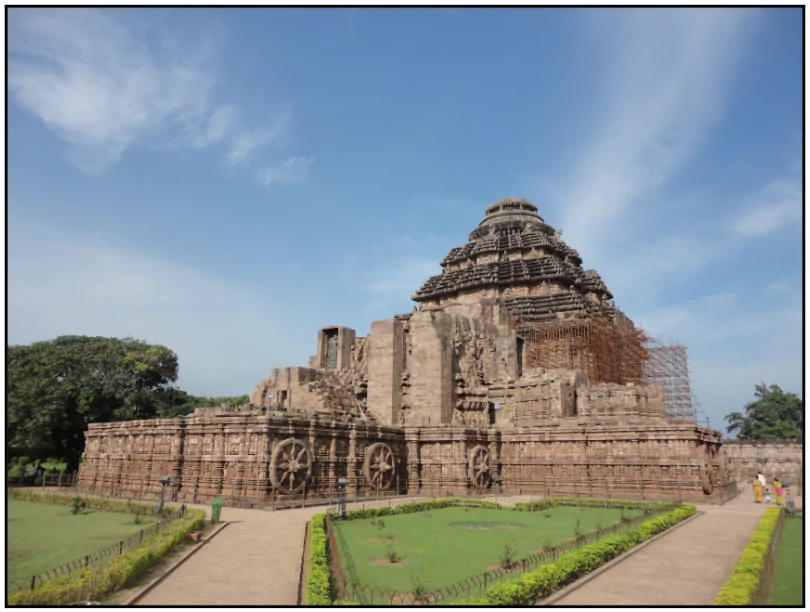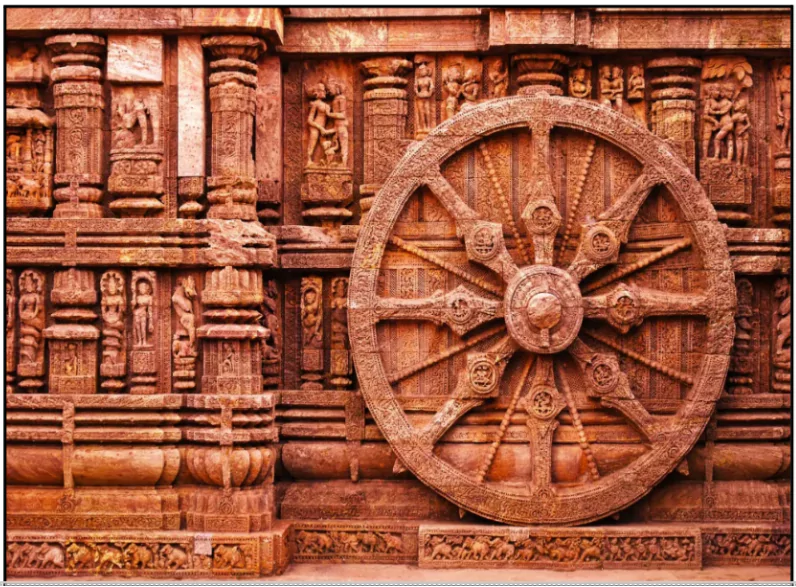The Ministry of Mines, in collaboration with the Government of Odisha, has organized the District Mineral Foundation (DMF) Exhibition at the Sun Temple, Konark, in Odisha.
- Singapore President Tharman Shanmugaratnam visited the Sun Temple, highlighting its global prominence and Odisha’s rich craftsmanship.
Enroll now for UPSC Online Course

About Konark Sun Temple
- Location: Situated on the coastline of Odisha in Puri district.
- Other Name: Known as Surya Devalaya, the temple is dedicated to the Hindu Sun God, Surya.
- Built By: Constructed by Narasimha Deva I (1238–1264) of the Eastern Ganga dynasty in 1250.
- Material: Made from Khondalite rocks giving it the nickname the “Black Pagoda” due to its dark color.
Architecture of Konark Sun Temple
- Style: Represents the Kalingan temple architecture.
- Key Features:
- Vimana: Tower that once featured a magnificent shikhara (collapsed in the 19th century).
- Jagamohana: Pyramidal audience hall.
- Natmandir: Elevated and roofless dance platform.
 Symbolism:
Symbolism:-
- Designed as a chariot of Surya with 24 intricately carved wheels and 7 horses.
- The 7 horses represent the 7 days of the week.
- UNESCO Status: Temple was designated a UNESCO World Heritage Site in 1984.
- Orientation: Faces east so the first rays of the sunrise illuminate the entrance.
- Sundials: The temple’s wheels serve as accurate sundials, capable of measuring time to the minute.
- Sculptures: Base walls are adorned with carvings of animals, foliage, warriors, and other motifs.
- Restoration: A project to remove the sand and restore the entrance hall was initiated in 2022.
Check Out UPSC CSE Books From PW Store
About Kalinga Architecture
- Kalinga style is identified as a subclass under the Nagara category
- Structure: Temples consist of two primary sections:
- Deula: Tower.
- Jagmohan: Hall.
- Decoration: Both deula and jagmohan walls are richly sculpted with motifs and figures.
- Repeated Motif: Features horseshoe-shaped designs.
- Duela Types
- Rekha Deula: Vertical, curvilinear towers, associated with Vishnu, Surya, and Shiva.
- Pidha Deula: Step-pyramid-shaped structures, housing outer dancing and offering halls.
- Khakhara Deula: Elongated vault-like structures, mainly for Chamunda and Durga temples.
- Dravidian and Nagara Style Influence:
-
- Dravidian Style: Seen in some sculptural motifs.
- Nagara Style: Evident in its vertical shikharas and sanctum designs.
![]() 21 Jan 2025
21 Jan 2025


 Symbolism:
Symbolism: